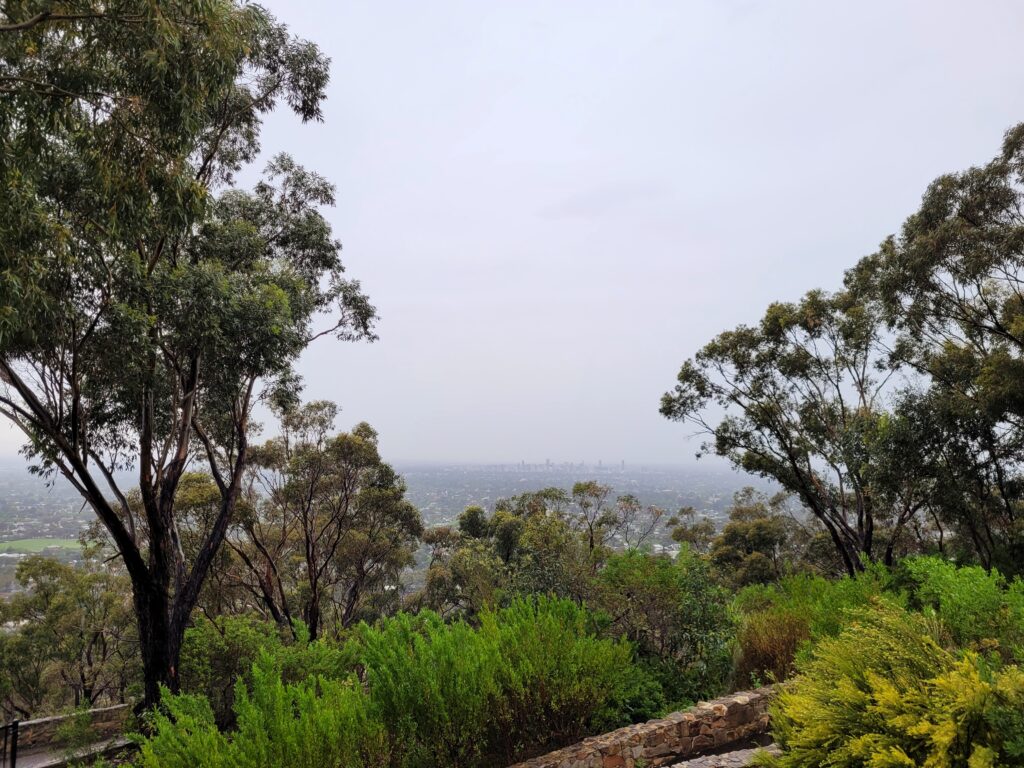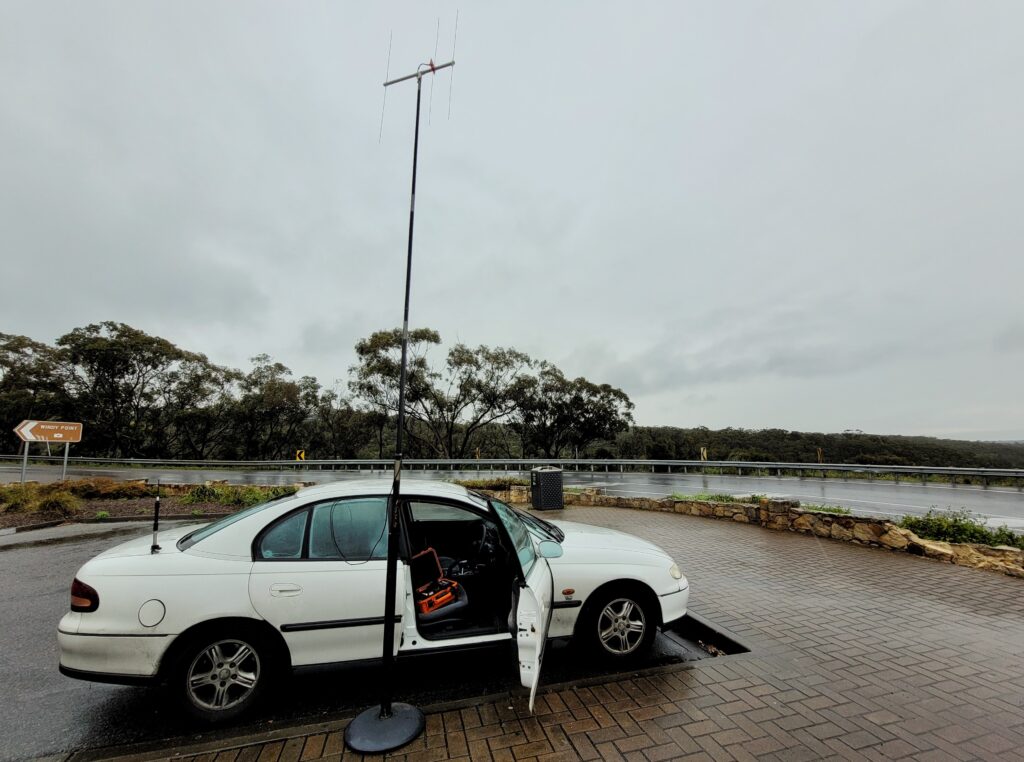A new addition to the South Australian amateur radio events calendar
Sunday the 23rd of October brought a new addition to the VK5 event calendar with the first inaugural AREG VHF Sprint contest.
This was a fast-paced 30 minute contest held on 144 MHz FM simplex by the Amateur Radio Experimenters Group, with the goal of both stimulating VHF simplex activity in Adelaide and surrounding areas, and to introduce or reintroduce operators to VHF operating – all while having some fun of course!
As I had been squarely in the ‘introduce’ category, having not played around much at all with VHF except for repeater operations, I knew that I had to give it a go.
Location, Location, Location
Living some ways away from the Adelaide metro area, I decided in the days leading up to the contest that I would be operating portable, choosing Windy Point Lookout as my location for the morning. At 220 metres ASL, with good forward line of sight over the Adelaide plain to the north, it would provide an excellent location especially once paired with a good antenna.
Heading out on the morning, the weather was remarkably grey for late October. Just the day before we had been blessed with a top of 20° with clear blue skies and a light breeze, however the temperature had dropped to about 15° overnight, with rain and cloud settling in. The decision was made to still head to Windy Point in these conditions as contact prospects from home would have been bleak.
The rain was heavy in places on the drive up, even worryingly so at some points, but had returned to only a drizzle by the time I arrived.

Station Setup
Arriving at Windy Point, I opted to setup the station inside the car, as while there was a perfectly situated picnic table, it had no canopy and was therefore exposed to the elements.
For an antenna, I had considered that I would likely be able to use only the 144 MHz antenna mounted on the car. However, as this was the first year of the event being held I didn’t know what to expect when it came to number of participants – including the possibility of people participating far outside the metro area, for whom a more performant antenna would be necessary in order to work them.
For this reason, I opted to construct a lightweight three element Yagi antenna to use on the day – Full details on the construction of this antenna to come in their own post.
I opted to place the antenna atop the sixth section of my 9m squidpole, with the three sections above removed. This allowed the antenna to be placed at approximately 6m above ground with no bend or flex in the squidpole, owing to an antenna weight of just 180 grams. The squidpole was then lowered slightly to finally place the antenna at 4m above ground, to ensure a sufficient length of coaxial cable could make it to the transceiver in the car.
This antenna setup performed well, with VK5ZM receiving me at S9+20db from his location approximately 20km away on Anstey Hill northeast of Adelaide. I was running six watts from my Yaesu FT818

Contest operating
For this contest I operated interchangeably between making CQ calls, and scanning the band to find other stations, switching between the two when I couldn’t find anymore contacts to make with the operating strategy I was using at the time.
At two points in the morning I had the experience of working a miniature pileup, working three stations in rapid succession at two stages within the morning. These are by no means large pileups in the world of amateur radio contesting, but not something I’ve been able to experience before in HF contesting with my QRP power levels. That’s definitely opened my eyes to how fun fast-paced contesting can be when you’re able to operate a station that can propagate well. Perhaps some motivation to get back to studying for a license upgrade so that I can use that style of operating in some HF contests in the future.
I finished the 30 minute sprint with thirteen stations in my log – having worked VK5JGM, VK5XB, VJ5W, VL5Z, VL5X, VK5AKK, VK5WU, VK5UJ, VK5CIA, VK5SWR, VJ5M, VL5A, and VL5K.
Closing thoughts
All in all it was a wonderful morning of portable operations, and the 30 minute contest time allowed for an excellent pace relevant to the number or entrants heard, making for some relaxed Sunday morning operating.
There were certainly a couple of times during the morning where it seemed like I had worked everyone, where tuning the band only yielded stations calling CQ that I had already worked, and making calls of my own only turned up a handful of accidental replies from already worked stations. Sticking at it through these moments though, there seemed to be a steady flow of operators joining in after the start time to keep things interesting – There were certainly a couple of participants who joined later on that I was unable to work within the time period.
Additional operators joining future sprints would certainly serve to elevate the enjoyment of fast-paced operating if the 30 minute run time is kept. I do wonder if there may have been more participants this morning had the weather been nicer, and allowed more people to head out and operate from the hilltops.
A big thanks to everyone at AREG involved in putting this event together! It was a lovely time and I hope this contest has a chance to cement itself as a staple of the VK5 events calendar in the years to come.